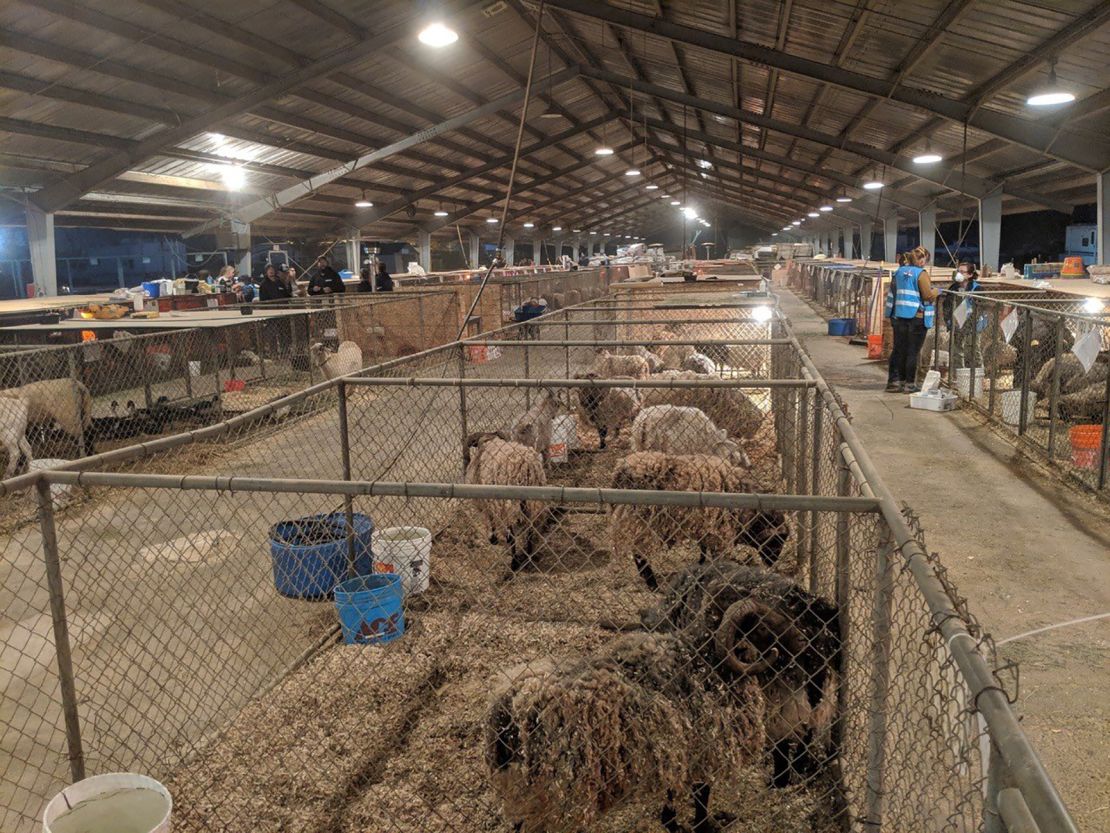Cats. Dogs. Hamsters. Ducks. Horses. Pigs. Lizards. Macaws. Chinchillas.
Go to a shelter for the animals displaced by the Camp Fire and you’ll see just about every type of creature that people keep as pets.
Thousands of them are in shelters in Northern California because of the record-setting blaze.
“There are more animals in shelter care than people,” Nathan Wilkinson, the incident commander for an ad hoc volunteer group at a large shelter in Gridley, told CNN.
On any given day, Wilkinson said, animal shelters will host about 2,000 animals displaced by the fire. That’s more than double the number of people in the Red Cross shelters across the state, according to the most recent update from the Red Cross.
The fire – the deadliest and most destructive wildfire in California’s history – has destroyed more than 12,000 residences and displaced tens of thousands of people, many of whom have found refuge outside the fire shelter system.

At its peak, the shelter at the Butte County Fairgrounds housed as many as 1,000 animals, Wilkinson said. The animals go through 30 to 40 tons of feed each day, he said.
Many displaced animals need burn treatment when they arrive at the shelters.
“Some were so severely burned that they didn’t make it. That was the hardest part,” Wilkinson said. “People did everything they could do to get those animals here to get them to care.”
Leah Critchfield, incident commander for the North Valley Animal Disaster Group, has worked fire shelters for years. This one is different in scale than the others, she said.
The injuries and number of animals are worse, as is the devastation to the community, she said at a shelter in Chico.
The California Veterinary Medical Reserve Corps, a volunteer group of veterinarians, has been caring for animals at the shelter, Critchfield said.
“If they need a higher level of care, they are sent to vet hospitals,” she said.
There are hundreds of other volunteers on the roads rescuing animals, Wilkinson said.
Teams go out each day, sometimes with a stack of addresses for people who have called in and requested that someone come get their pet, said Norm Rosene, a spokesman for the North Valley Animal Disaster Group.
They generally work 7 a.m. to 6 p.m., picking up animals or feeding animals left behind who just need to be checked on. If they see any strays, they try to catch them and take them to the facility’s section for lost pets, Rosene said. Cal Fire workers and power company employees also find lost animals.
If they cannot snare them, they leave food and water.

Wilkinson said the needs from donors changes each day. Sometimes they need food, sometimes they need volunteers to come feed the animals, sometimes the need is for something like a container to hold water. He recommends calling a shelter if you want to donate.
Critchfield, who is a veterinarian tech and a paramedic, said right now it would be most helpful if people sent cash to NVADG.
Many of the animals are going to be in shelters for months. At some point, officials will figure out which ones no longer have an owner who will come for them.
Those pets will go to local shelters, and they should all be adopted out, if the owner cannot be found, said Rosene.
CNN’s Silvio Carrillo, Stephanie Becker and Madeline Holcombe contributed to this report.
